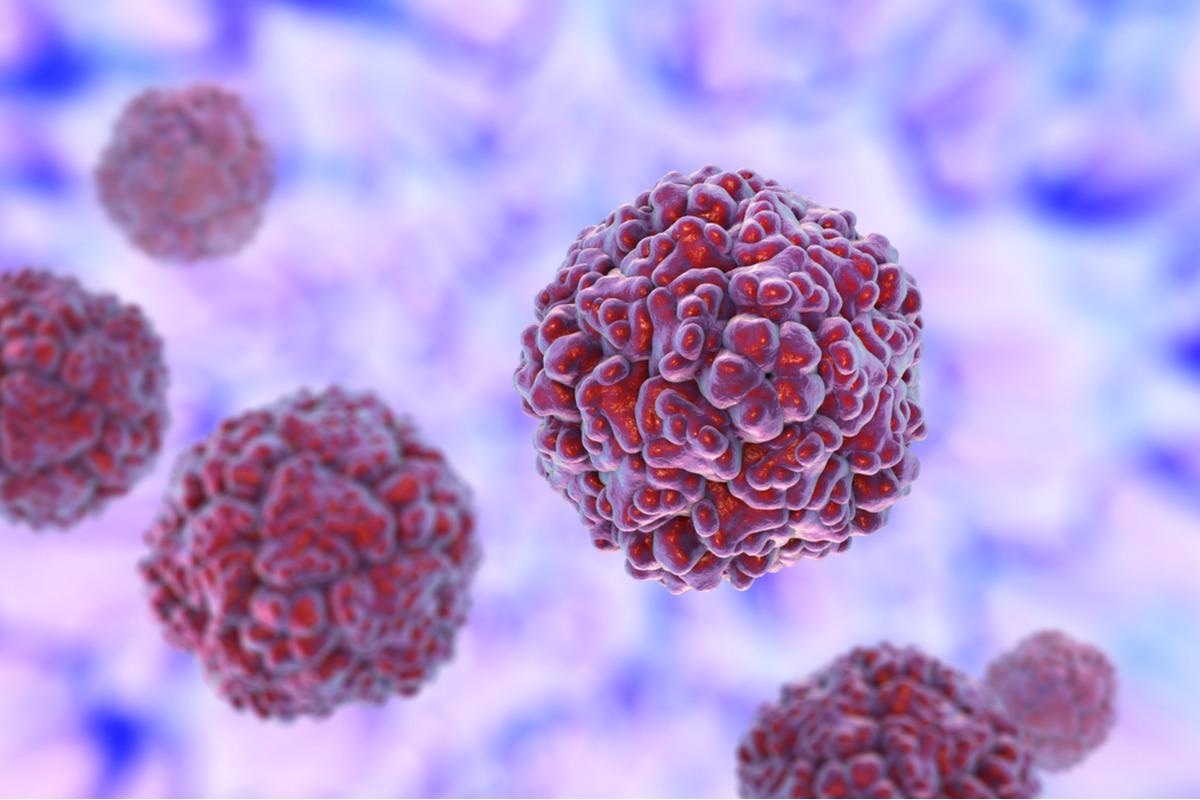The changes in human behavior as a result of the coronavirus disease 2019 (COVID-19) pandemic reached an unprecedented level in 2020 and 2021, as governments around the world closed their borders and began implementing restrictions designed to halt the spread of the disease. These included social distancing measures, the closure of public buildings, and even full lockdowns/stay-at-home orders.
However, these changes affected the transmission of many other pathogens besides severe acute respiratory syndrome coronavirus 2 (SARS-CoV-2). To this end, researchers from the Hospital Moinhos de Vento have been investigating the rates at which these pathogens appear in children, both independently and alongside SARS-CoV-2, in public and private hospitals.

Study: Rhinovirus as the main co-circulating virus during the COVID-19 pandemic in children. Image Credit: Kateryna Kon / Shutterstock.com
About the study
The current Jornal de Pediatria study examined participants in two hospitals in Porto Alegre, a private tertiary hospital and a public hospital. Children in either hospital were enrolled when seeking care, with the primary inclusion criteria being the presence of at least one symptom of COVID-19.
Oropharyngeal and bilateral nasopharyngeal swabs were collected. Detection for SARS-CoV-2 was performed and analyzed through qualitative reverse-transcriptase polymerase chain reaction (RT-PCR) assays. A second bilateral nasopharyngeal swab was used to detect other pathogens.
Data normality assumptions were verified for continuous variables, percentages were used to describe categorical variables, and either Pearson’s Chi-square or Fisher’s exact tests were used to evaluate associations.
Descriptive analyses considered the proportion of detected pathogens per age group, frequency of epidemiological weeks, and absolute frequency of coinfections. A multivariable logistic regression model adjusted for relevant covariates assessed the risk of hospitalization.
Study findings
A total of 481 participants were screened for entry into the study, 45 of whom were considered ineligible and thus excluded from the analyses. Out of the remaining 436, 45 required hospitalization, while 377 were only included as outpatients.
While the researchers were able to monitor most of the participants for the next 28 days, the hospitalization outcomes of 14 individuals could not be collected. Sixty-five of the children’s caregivers answered questions in the follow-up interview. Participants were aged between 0.2 and 17.3 years, with a median age of 5.4.
The most common virus detected by far was rhinovirus, which appeared in 49.5% of participants, followed immediately by SARS-COV-2 in 22.2% of patients. Coinfection of both viruses occurred in 7.1% of individuals.
Another 24 participants were infected with other pathogens, including human enterovirus in seven individuals, Mycoplasma pneumonia and adenovirus in six individuals each, human metapneumovirus and coronavirus NL63 in two participants each, and Chlamydophila pneumonia in one.
Other pathogens tested for but not detected in the study participants included coronavirus types HKU1, 229E, and OC43; influenza A virus types H1 and H3; influenza B virus, parainfluenza virus types 1, 2, and 3, as well as respiratory syncytial virus (RSV) types A and B.
COVID-19 was negatively associated with hospitalization in children and adolescents, with one SARS-CoV-2 positive child hospitalized out of 91. A larger proportion of the children who were treated in the public institution were hospitalized as compared to those in the private institution. Forty-five individuals were hospitalized in the following 28 days, most of whom were younger than five years old. Multivariable models showed that children below five years of age from a public hospital were associated with a greater risk of admission. Asthma was not found to be a relevant feature.
Out of the hospitalized children, 21 required supplemental oxygen, and four were admitted to the intensive care unit (ICU). There was no difference in the need for respiratory support between children in public and private hospitals. No deaths were detected, nor was there any report of a child requiring mechanical ventilation.
The time from the onset of symptoms to enrollment was similar in both outpatients and hospitalized patients, as was the rare use of azithromycin at inclusion. The use of other antibiotics was significantly higher in hospitalized children and hospitalized children were significantly less likely to be immunized for influenza.
The common COVID-19 symptoms such as cough, discomfort, and respiratory tract issues were equally likely in both groups. However, hospitalized participants were more likely to suffer from dyspnea, nausea, and vomiting.
Conclusions
The current study demonstrates that rhinovirus was the primary circulating virus in children, both alone and in conjunction with SARS-CoV-2. The authors suggest that this finding is in part due to changes caused by social distancing policies.
Significant differences were also observed in the hospitalization rates of children treated in public hospitals compared to private hospitals; however, little difference in disease outcome was reported.
- Varela, F. H., Sartor, I. T. S., Polese-Bonatto, M., et al. (2022). Rhinovirus as the main co-circulating virus during the COVID-19 pandemic in children. Jornal de Pediatria. doi:10.1016/j.jped.2022.03.003.
Posted in: Child Health News | Medical Science News | Medical Research News | Disease/Infection News
Tags: Adenovirus, Adolescents, Asthma, Azithromycin, Child Health, Children, Coronavirus, Coronavirus Disease COVID-19, Cough, Dyspnea, Enterovirus, Frequency, Hospital, Influenza, Intensive Care, Mycoplasma, Nasopharyngeal, Nausea, Oxygen, Pandemic, Pneumonia, Polymerase, Polymerase Chain Reaction, Respiratory, Respiratory Syncytial Virus, Rhinovirus, SARS, SARS-CoV-2, Severe Acute Respiratory, Severe Acute Respiratory Syndrome, Syndrome, Virus, Vomiting

Written by
Sam Hancock
Sam completed his MSci in Genetics at the University of Nottingham in 2019, fuelled initially by an interest in genetic ageing. As part of his degree, he also investigated the role of rnh genes in originless replication in archaea.
Source: Read Full Article


